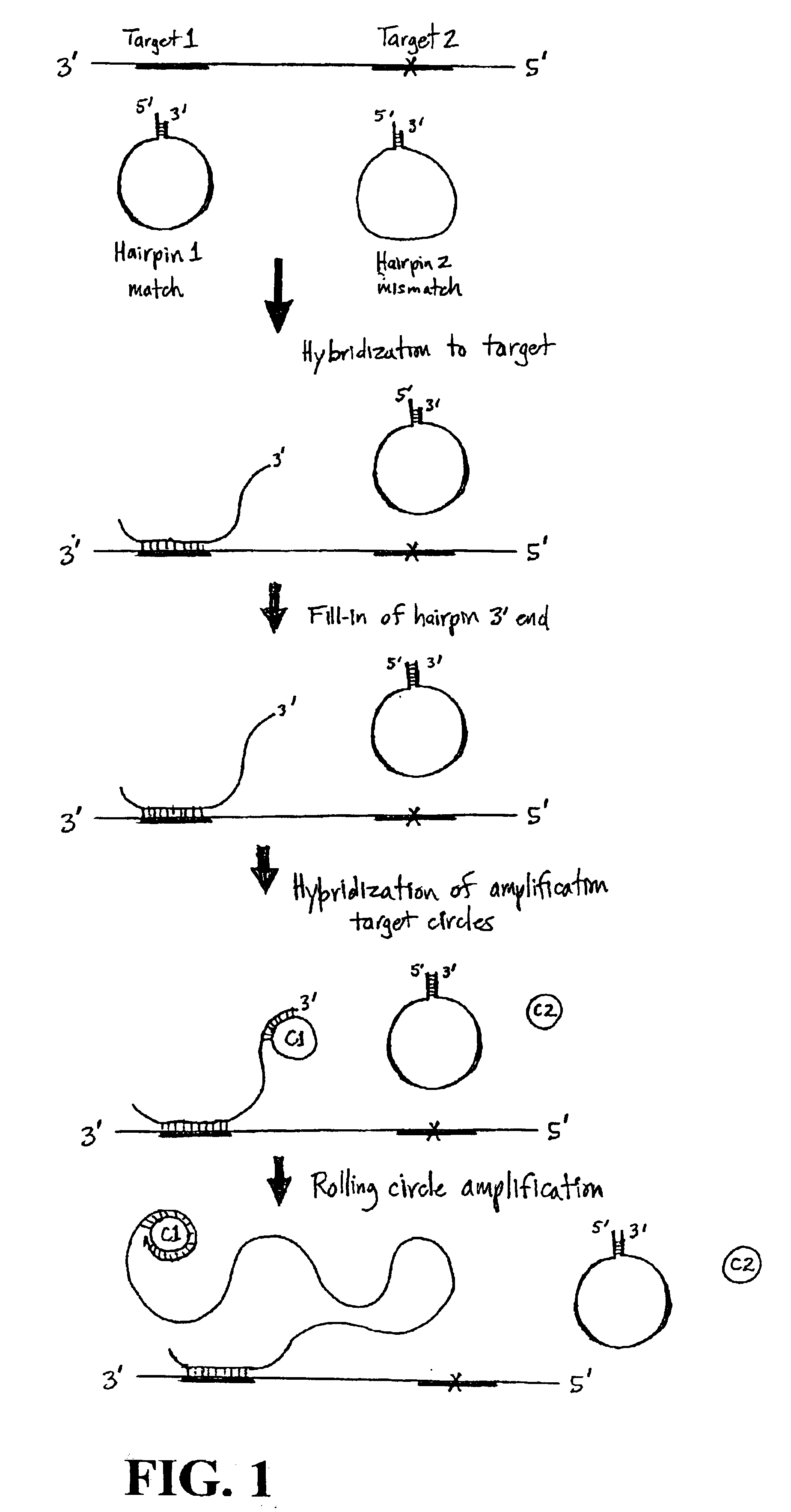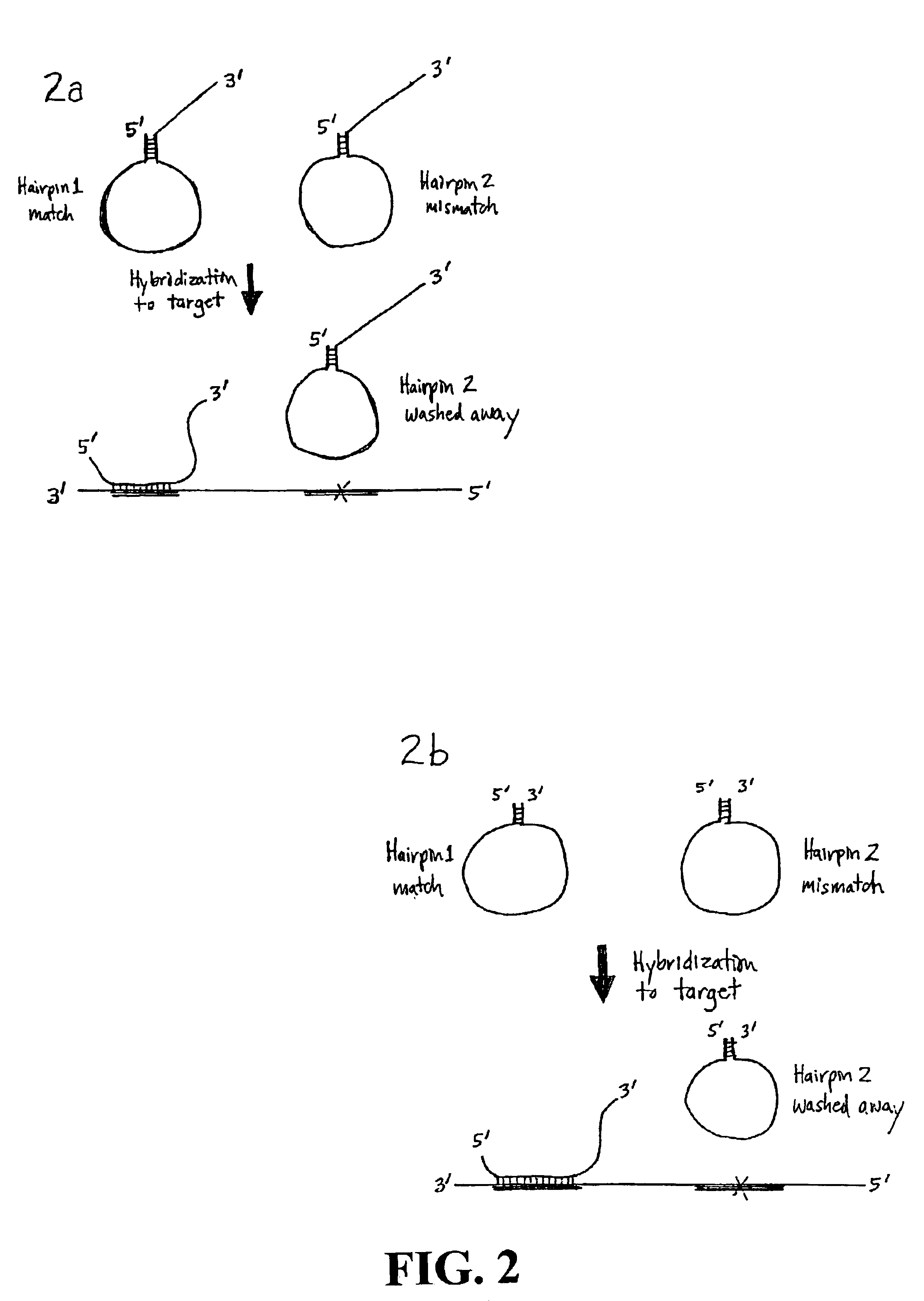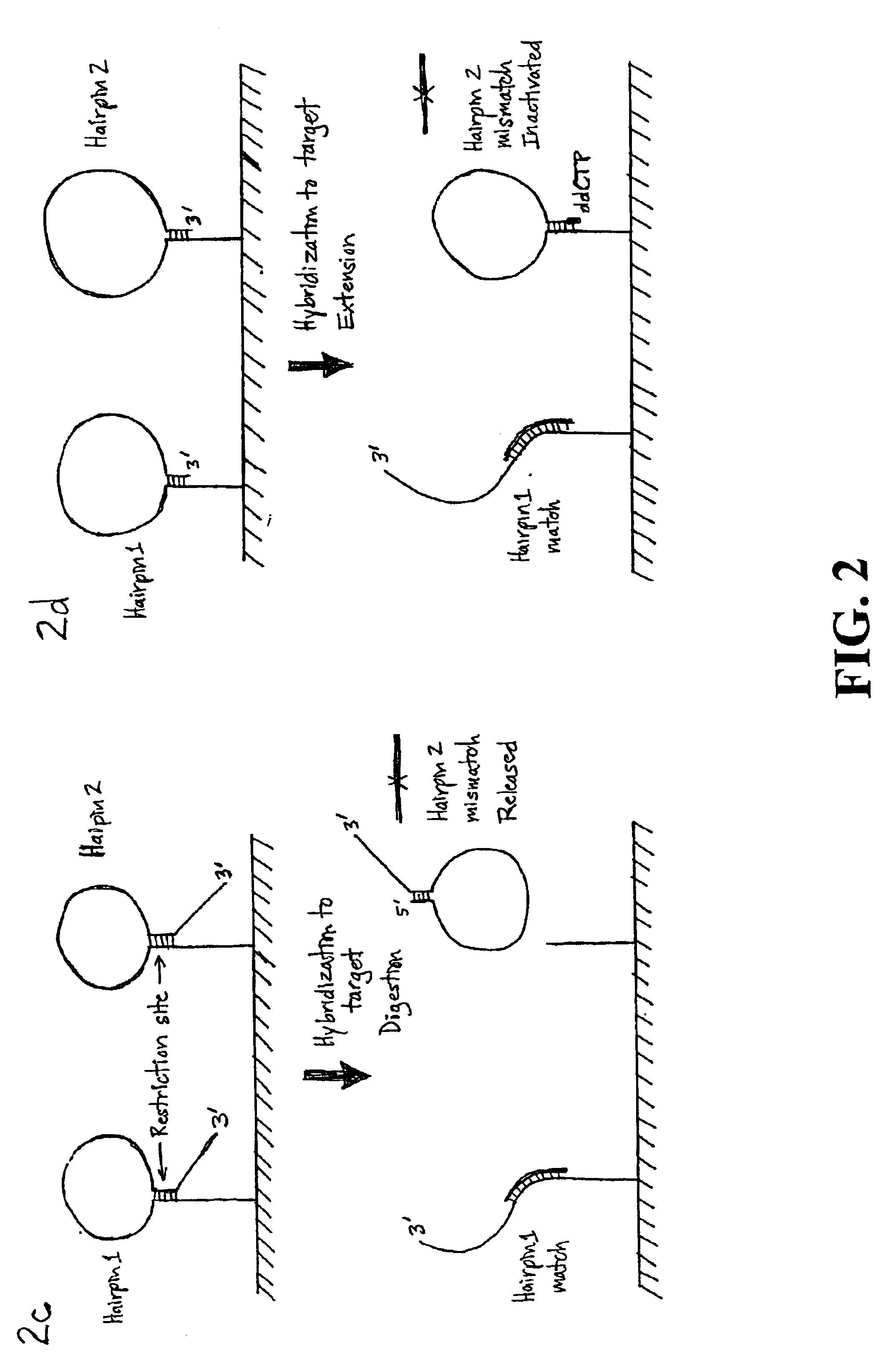Nucleic acid detection using structured probes
a structure-based, nucleic acid technology, applied in the field of nucleic acid detection, can solve the problems of low quantitative precision, difficult or impossible detection of targets less than 500 bases in length, and lack of precision, so as to facilitate the detection of probes.
- Summary
- Abstract
- Description
- Claims
- Application Information
AI Technical Summary
Benefits of technology
Problems solved by technology
Method used
Image
Examples
Embodiment Construction
The disclosed method and compositions are based on probe designs that have a higher efficiency of detection than previous rolling circle amplification probes. The disclosed structured probes are bifunctional molecules having a probe function and a detection function. These functions are embodied by including in the structured probes sequences complementary to a target sequence and sequences to facilitate detection of the hybridized probe. The structured probes are characterized by an allele discrimination capability that is markedly better that the comparable linear probes due to the competition between the structural interferences between folding due to intramolecular duplex formation and linear rigidity due to hybridization of the probe sequence to the target (Tyagi and Kramer, Nat Biotechnol 14(3):303-8 (1996); Bonnet et al., Proc Natl Acad Sci USA 96(11):6171-6 (1999)). Preferred structured probes will not hybridize to mismatched sequences under suitable conditions because duple...
PUM
| Property | Measurement | Unit |
|---|---|---|
| Structure | aaaaa | aaaaa |
| Distance | aaaaa | aaaaa |
Abstract
Description
Claims
Application Information
 Login to View More
Login to View More - R&D
- Intellectual Property
- Life Sciences
- Materials
- Tech Scout
- Unparalleled Data Quality
- Higher Quality Content
- 60% Fewer Hallucinations
Browse by: Latest US Patents, China's latest patents, Technical Efficacy Thesaurus, Application Domain, Technology Topic, Popular Technical Reports.
© 2025 PatSnap. All rights reserved.Legal|Privacy policy|Modern Slavery Act Transparency Statement|Sitemap|About US| Contact US: help@patsnap.com



